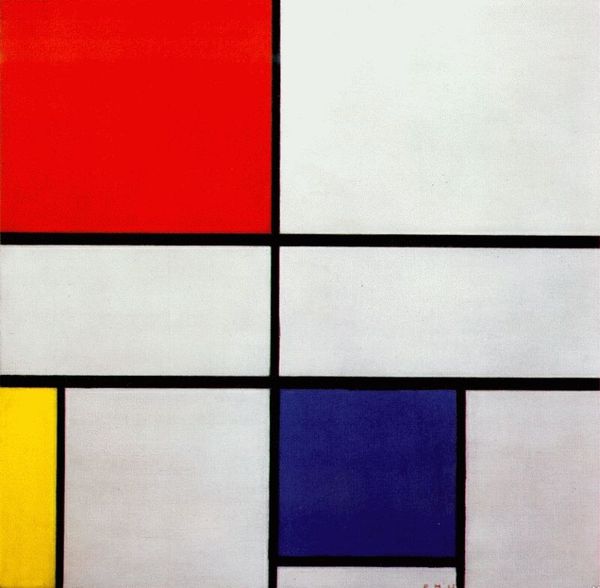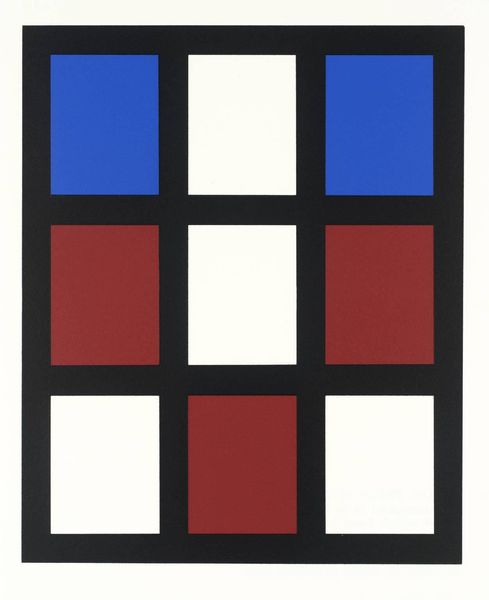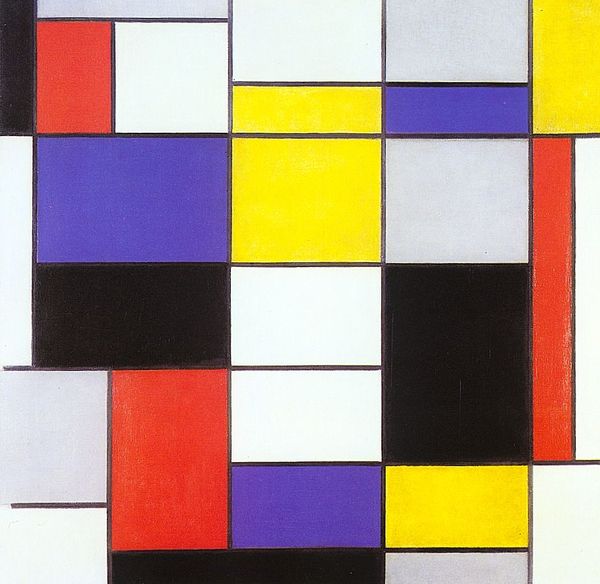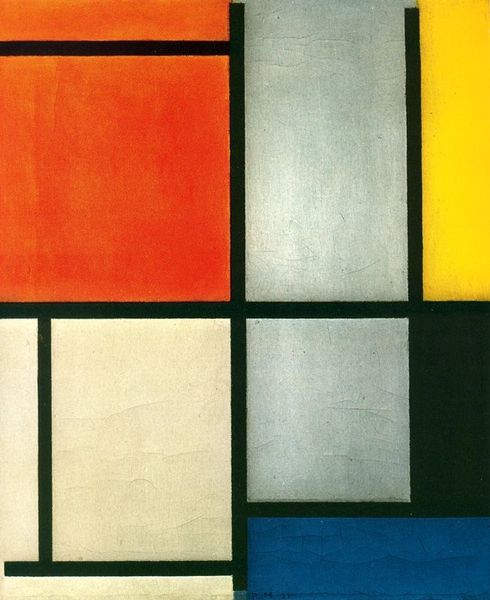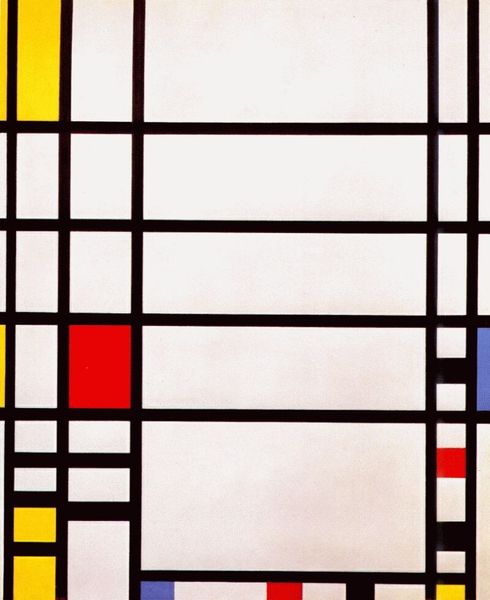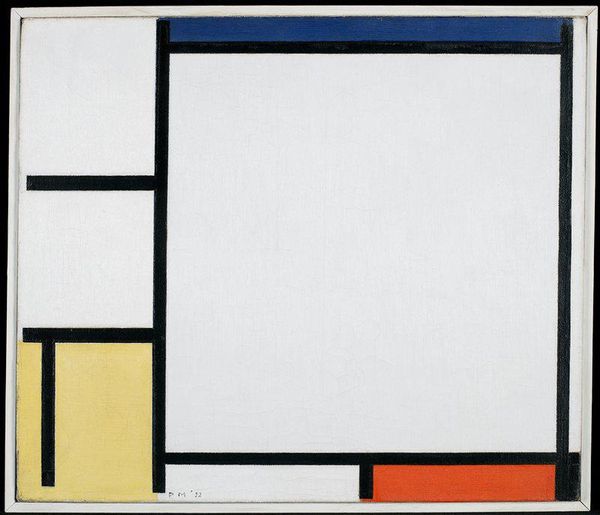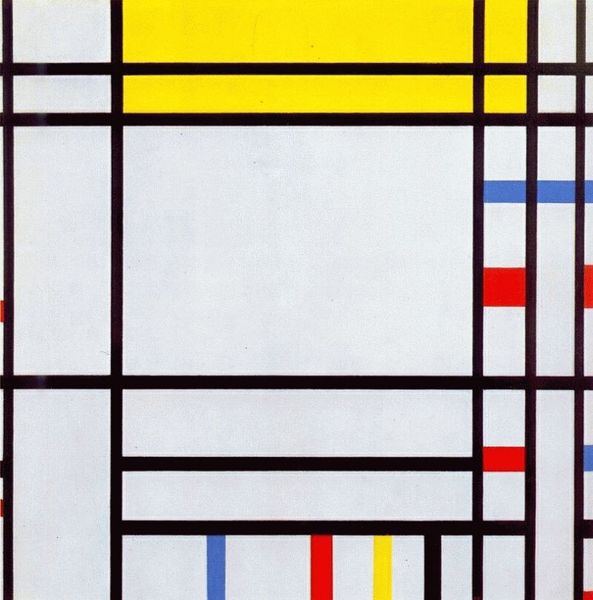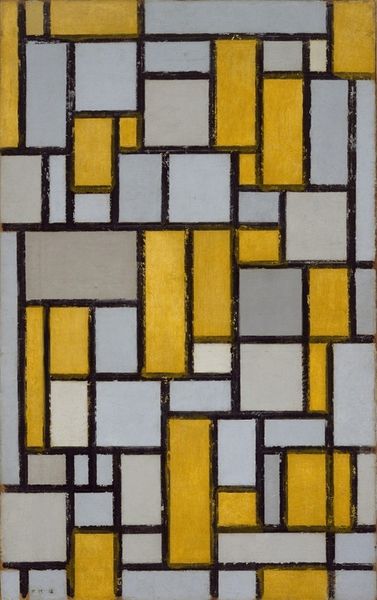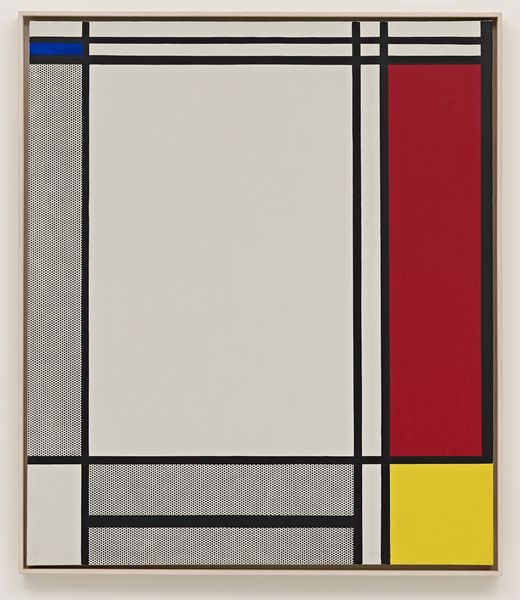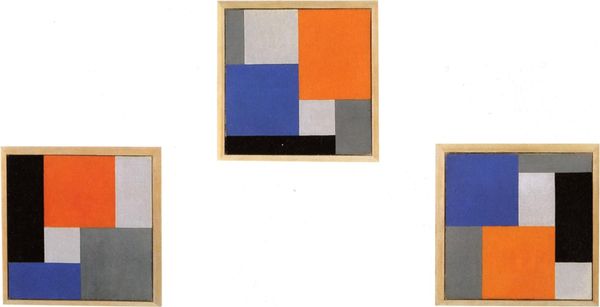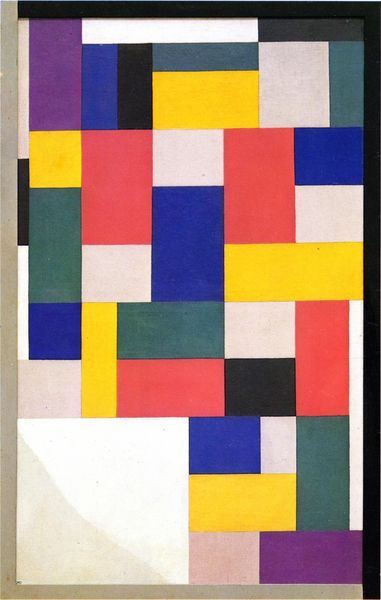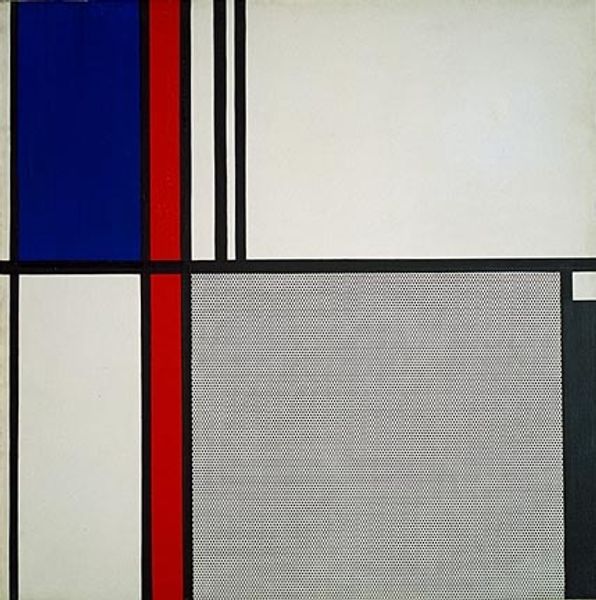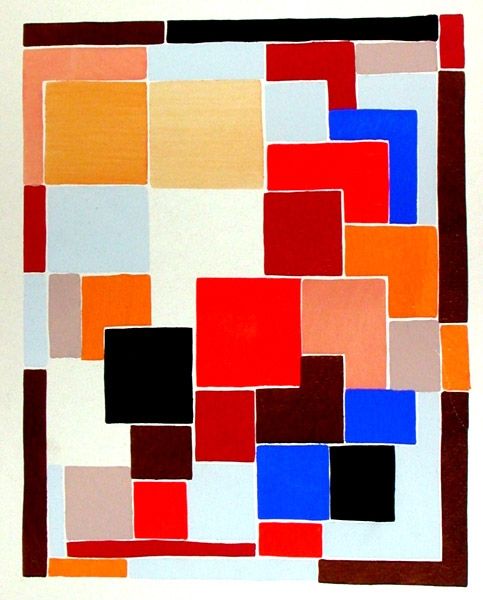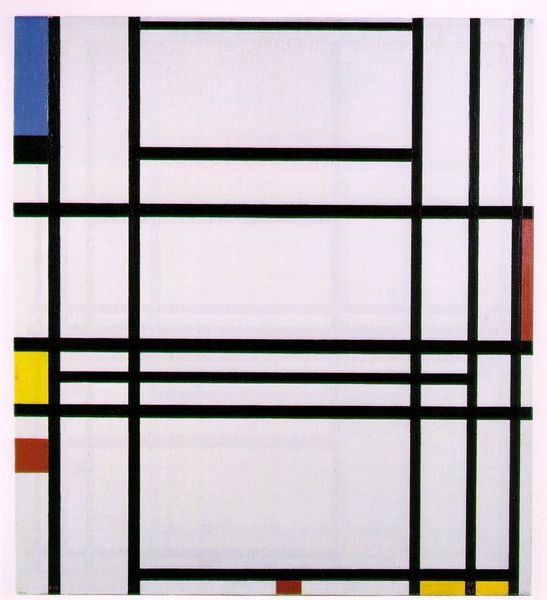
glass
#
de-stijl
#
neo-plasticism
#
geometric composition
#
abstract
#
form
#
geometric pattern
#
glass
#
abstract pattern
#
rectangle
#
minimal pattern
#
geometric
#
geometric-abstraction
#
vertical pattern
#
line
Copyright: Public domain
Curator: Looking at this Tripartite stained glass window, the starkness and geometry give me an immediate sense of calm. What's your take? Editor: There's a visual discipline, isn't there? Van Doesburg's choice to create this work using stained glass is quite thought-provoking. It elevates geometric abstraction by employing what had largely become a craft medium by that time. Curator: Exactly! The inherent challenges of working with glass—its fragility, the labor involved in cutting and joining—transform what could be a simple design into a powerful statement. He isn't just painting an image; he's constructing an object with a clear link to architectural space. Editor: And let's think about that architectural link. De Stijl wasn't only concerned with art. It envisioned a new, total environment, a fusion of art, design and architecture. By utilizing the very substance of windows, traditionally intended to define and frame external realities, they sought instead to reconstruct that vision through pure, internal abstraction. Curator: And I believe this is not merely aesthetic. How would the creation of geometric abstractions by skilled, maybe anonymous workers impact our understanding of "art"? The design seems to suggest, perhaps unintentionally, that craftspeople may play an unacknowledged role. Editor: It makes one think, too, of marginalized hands behind glorious buildings we so easily take for granted. The interplay between color and light is critical; however, is it subverting that tradition through minimalist geometric forms that seem more concerned with pure visual relationships? And does this new environment allow room for identities, for representation of bodies, or does it further promote neutrality and a standardized citizen? Curator: These rectangles are positioned deliberately in what feels like dynamic tension. But it is fascinating how such a constrained vocabulary yields such different experiential sensations across those three panels. Editor: Precisely! By situating the work this way, in this place, the stained glass both continues an artistic tradition while critiquing it. It invites new discussions about the political and social impacts of this visual order on various audiences. Thank you for this opportunity to talk! Curator: A pleasure! This was indeed an invitation to rethink and look differently.
Comments
No comments
Be the first to comment and join the conversation on the ultimate creative platform.
